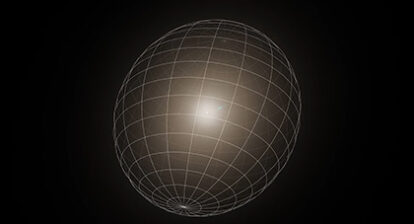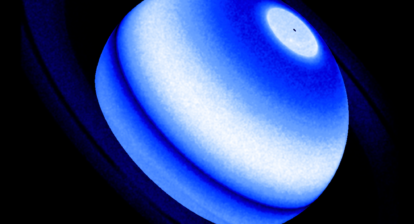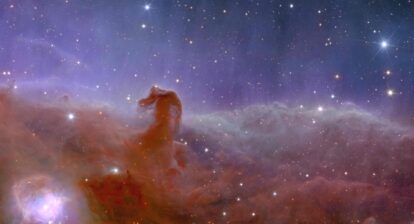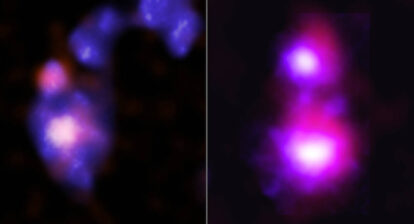Observe this image of a hypnotic grand design galaxy recently shared by European Southern Observatory (ESO).
On its website ESO describes galaxy NGC 4254: “This image features the spectacular galaxy NGC 4254, also known as Messier 99. It’s an example of a grand design spiral galaxy, featuring strong, prominent, well-defined arms that wrap clearly around the galaxy’s centre.
Messier 99 is located 49 million light-years from Earth in the constellation of Coma Berenices (in the Virgo Galaxy Cluster). Here it was imaged in exquisite detail by the Multi-Unit Spectroscopic Explorer (MUSE) on ESO’s Very Large Telescope (VLT). It is a combination of observations conducted in different colours, or wavelengths, of light, showing clouds of gas ionised by newly born stars. Hydrogen, oxygen and sulphur gas are shown in red, blue and orange respectively.
The image was taken as part of the Physics at High Angular resolution in Nearby GalaxieS (PHANGS) project, which is making high-resolution observations of nearby galaxies across all wavelengths of the electromagnetic spectrum to understand the life-cycle of star formation in galaxies.”
And look at how absolutely brilliant it is!

This image features the spectacular galaxy NGC 4254, also known as Messier 99. It’s an example of a grand design spiral galaxy, featuring strong, prominent, well-defined arms that wrap clearly around the galaxy’s centre. Credit ESO/PHANGS
(Read James Webb Telescope just returned its first image and it is glorious)
A grand desing galaxy is a type of spiral galaxy with prominent and well-defined spiral arms, rather than multi-arm and flocculent spiral galaxies with subtle, fluffy and patchy spiral arms. The activity in this galaxy is three times higher than an average similar type galaxy, and the reason for this, according to astronomers, is a possible “close and rapid encounter ~280 Myr ago with another massive Virgo galaxy, followed by ram pressure stripping that is ongoing“. Astronomers have assessed this based on the “peculiar, one-armed spiral pattern of NGC 4254 and its distorted and kinematically perturbed atomic gas distribution“.
(A Phantom Grand Design Galaxy)
Here is another image of the galaxy captured by the Hubble Space Telescope:

Messier 99, catalogued as NGC 4254 captured by the Hubble Space Telescope. Image Credit: NASA, ESA, Hubble, Janice Lee; Processing & Copyright: Leo Shatz







